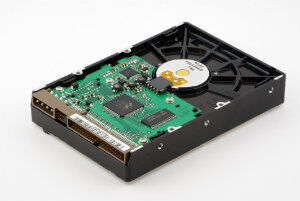 Check out Part One of this Two-Part Series on the most popular Aas in the business…
Check out Part One of this Two-Part Series on the most popular Aas in the business…
 Check out Part One of this Two-Part Series on the most popular Aas in the business…
Check out Part One of this Two-Part Series on the most popular Aas in the business…
The aaS model is much more than just a change in how software is paid for. It’s about taking the real total cost of ownership and converting that to a predictable expense, with a highly predictable outcome. It’s about delivering products that evolve and add continual value, versus projects that miss their mark and never meet the needs they were intended to address. This is a very different approach than what the IT industry has historically embraced
Today, designed obsolescence is a fundamental component of every hardware manufacturer’s strategy in every sector. Traditional, on-premise software is the same. Both are designed to require on-going support, parts, and maintenance, and at some point the manufacturer says to every customer, “you have to upgrade.” This approach is integral to the business objectives of all of these technology suppliers. Their financial objectives require that every customer has to do an upgrade every 3-5 years. I would be interested to know how much of the average organizational IT budget is spent every year “doing it again” – replacing a legacy system (that still works well enough) with a new and “improved” version because some vendor in the architecture cannot or will not support some component anymore.
- HaaS (Hardware-as-a-Service): Hardware as a Service (HaaS) is a service provision model for hardware that is defined differently in managed services and grid computing contexts. In managed services, HaaS is similar to licensing. In grid computing, HaaS is a pay-as-you-go model. One of the most popular in the “aaS” landscape, and part of the “Three-Headed-Dragon” structure of IaaS and PaaS – term can be used interchangeably – and up the recent past – HaaS was the dominant term with IaaS swiftly taking its place (as the term “Infrastructure” has taken over the tech landscape.)
- HCDaaS (Health-Center-Data-as-a-Service): Based on the Uniform Data System (UDS)’ core set of information, There are two primary responses to harness the potential of health care big data. One response is to keep adding labor and local investments in an attempt to keep up
with the demand for the capture and preparation of data for analytics. Labor comes in the form of more chart abstractors, more RN data specialists, more registry case report forms and data entry clerks, more data administrators, and more data analysts to be found in every facet of health care operations. Not to speak of the resources consumed where data capture and management are add-on duties to the primary functions of a clinician or other operations specialist.
The second response is to shift the cost of data curve by investing in an enterprise data-as-a-service architecture. Define, capture, and manage data assets once at an enterprise level, and offer it up as a service to the many different use cases in a far more efficient manner. The premise is that investment in thoughtfully designed enterprise data architectures as a shareable resource can lower the onus and cost to the organization to satisfy its hundreds of secondary data use cases. This shift downward of the data cost curve is a direct result of several attributes.
Constituencies can move quickly with their projects due to the relative simplicity of the data architecture to deliver shareable data artifacts–a patient, an encounter, a lab result. If data consumers require a slightly different data structure or have local domain requirements, the cost of implementation is still dramatically reduced as they need only concentrate on the localized requirement, and not the larger shared enterprise definition of data representing
Health-care operations and outcomes already accounted for as a service.
- IaaS (Infrastructure-as-a -Service): As mentioned earlier, IaaS is a provision model in which an organization outsources the equipment used to support operations, including storage, hardware, servers and networking components. The service provider owns the equipment and is responsible for housing, running and maintaining it. The client typically pays on a per-use basis. NOTE: One of the heads of the three-headed-dragon of Platform, Hardware and Infrastructure-as-a-Service – now the most used term of the three.
- MaaS (Markeplace-as-a-Service): Main implementation: Self-service catalogs (or marketplaces) are an emerging method for customers to purchase aggregated, integrated, and federated cloud services.
Service providers (and resellers) are tuning their categories to target their core customer base. Most e-commerce sites use MaaS as their go-to form of commerce structure. Marketplaces are seamless extensions of the sales process, offering great opportunities for upselling and cross-selling services.
- MaaS (Monitoring / Management-as-a-Service): MaaS offerings consist of multiple tools and applications meant to monitor a certain aspect of an application, server, system or any other IT component. There is a need for proper data collection, especially of the performance and real-time statistics of IT components, in order to make proper and informed management possible.
The tools being offered by MaaS providers may vary in some ways, but there are very basic monitoring schemes that have become ad hoc standards simply because of their benefits. State monitoring is one of them, and has become the most widely used feature.
- NaaS (Network-as-a-Service): Network-as-a-service (NaaS) is a business model for delivering network services virtually over the Internet on a pay-per-use or monthly subscription basis.
From the customer’s point of view, the only thing required to create an information technology (IT) network is one computer, an Internet connection and access to the provider’s NaaS portal. This concept can be appealing to new business owners because it saves them from spending money on network hardware and the staff it takes to manage a network in-house. In essence, the network becomes a utility, paid for just like electricity or water or heat. Because the network is virtual, all its complexities are hidden from view.
NaaS isn’t a new concept, but its deployment has been hindered by some of the same concerns that have affected other cloud computing services — especially questions about the provider’s ability to guarantee high availability (HA). Other concerns include dealing with service level agreements (SLAs), compliance issues related to data sovereignty and the possibility of vendor lock-in.
- PaaS (Platform-as-a-Service): See “The Three Headed Dragon of IaaS, PaaS and HaaS.”
- SaaS (Software-as-a-Service): Far and away the most popular is Software as a Service (SaaS) a software distribution model in which applications are hosted by a vendor or service provider and made available to customers over a network, typically the Internet.
SaaS is becoming an increasingly prevalent delivery model as underlying technologies that support Web services and service-oriented architecture (SOA) mature and new developmental approaches, such as Ajax, become popular. Meanwhile, broadband service has become increasingly available to support user access from more areas around the world.
- SaaS (or NewSaaS Security-as-a-Service): Security-as-a-service (SaaS) is an outsourcing model for security management. Typically, Security as a Service involves applications such as anti-virus software delivered over the Internet but the term can also refer to security management provided in-house by an external organization.
Security-as-a-Service offers a number of benefits, including:
- Constant virus definition updates that are not reliant on user compliance.
- Greater security expertise than is typically available within an organization.
- Faster user provisioning.
- Outsourcing of administrative tasks, such as log management, to save time and money and allow an organization to devote more time to its core competencies.
- A Web interface that allows in-house administration of some tasks as well as a view of the security environment and on-going activities.
Internet-based security (sometimes referred to as cloud security) products are a segment of the Software as a Service (SaaS) market. Gartner predicted that cloud-based security controls for messaging applications (such as anti-malware and anti-spam programs) would generate 60% of the revenue in that industry sector by 2013, up from 20% in 2008.
Security as a Service product vendors include Cisco, McAfee, Panda Software, Symantec, Trend Micro and VeriSign.
- UCaaS (Unified-Communications-as-a-Service): Unified Communications as a Service (UCaaS) is a delivery model in which a variety of communication and collaboration applications and services are outsourced to a third-party provider and delivered over an IP network, usually the public Internet.
UCaaS technologies include enterprise messaging and presence technology, online meetings, telephony and video conferencing. UCaaS is known for providing high levels of availability (HA) as well as flexibility and scalability for core business tasks.
- XaaS (Everything-as-a-Service): XaaS is a collective term said to stand for a number of things including “X as a service,” “anything as a service” or “everything as a service.” The acronym refers to an increasing number of services that are delivered over the Internet rather than provided locally or on-site. XaaS is the essence of cloud computing.
The most common examples of XaaS are Software as a Service (SaaS), Infrastructure as a Service (IaaS) and Platform as a Service (PaaS). The combined use of these three is sometimes referred to as the SPI model (SaaS, PaaS, IaaS). Other examples of XaaS include storage as a service (SaaS), communications as a service (CaaS), network as a service (NaaS) and monitoring as a service (MaaS).
Following the convention of pronouncing “SaaS” as “sass,” “XaaS” is sometimes pronounced as “zass.”








